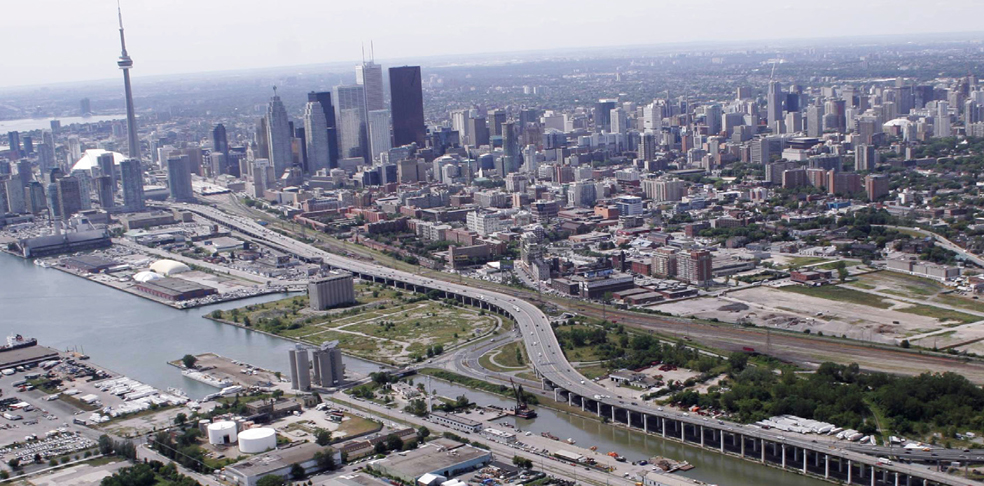From the time most of us were born, the unsightly Gardiner Expressway has been a major barrier between Toronto’s downtown core and Lake Ontario.
Despite Toronto’s location on one of the world’s Great Lakes – complete with all the offerings that come along with it – the Gardiner served as a major hindrance for both locals and tourists to enjoy the waterfront.
[ad_bb1]
If I didn’t know that before, I certainly realized it when our office was located in the Toronto Star building during the earlier days of Notable.ca. Especially in the windy winter months, a walk beneath the drab-looking Gardiner Expressway was daunting at best, even a little depressing.
Of course, there’s been much discussion as to what to do with the aging highway.
Come 2017, a walk underneath it (well, at least, the western portion) might not be so daunting after all. That’s because a 10-acre space under the highway will become a network of pathways and common areas designed to unite a rapidly growing part of the city.
Formally announced this morning, the public-space transformational project – appropriately named Project: Under Gardiner – is supported by a $25-million private donation. Not surprisingly, this is the largest donation Toronto’s parks and public spaces have ever seen. It will be built by the public agency Waterfront Toronto and owned by the city.
Though it initially sounds a lot like the Underpass Park initiative, the goal is to turn the space underneath the Gardiner into a place “unlike any other in the city,” according to the Globe and Mail.
This means the addition of a combined walking and cycling trail, along with covered spaces that can be used for markets, meetings, and performances, according to Globe and Mail. Additionally, a ‘grand staircase’ at the corner of Strachan Avenue will serve as an informal amphitheatre. The project will come with a staff curator to organize cultural events.
“Project: Under Gardiner will create a new east-west cultural and amenity corridor that helps to connect attractions across the waterfront, including Molson Amphitheatre, BMO Field, Historic Fort York, Toronto Music Garden and the revitalized Queens Quay, Harbourfront Centre, the CN Tower, Rogers Centre, Toronto Railway Museum, Ripley’s Aquarium, the Air Canada Centre and the Toronto Islands via the Jack Layton Ferry Terminal,” reads a press release on the Waterfront Toronto website.
We won’t have to wait too long for the plan to materialize either; the first planning phase of the project is scheduled to begin soon, and will be completed by July 2017. This will include the trail (which will run from Strachan Avenue to Spadina Avenue), the aforementioned ‘grand stair,’ and a pedestrian bridge across Fort York Boulevard.
The transformation of the space is the vision of PUBLIC WORK and urban designer Ken Greenberg. According to the Globe and Mail, later phases could include buildings like an “innovation hub” of art, design, and fabrication studios.
This sounds like a step in the right direction for the city and the best use of the infrastructure that won’t be going anywhere any time soon. As for the eastern portion of the Gardiner, its fate remains to be seen.

[ad_bb2]







